Storage Tips – Preparing Spaghetti Squash
Written by Rachel, Posted in Roasting, Storage/Prep, Thoughts, Vegetables, Vegetarian
I really enjoy eating seasonally. It’s up there in importance with healthy, organic, GMO-free food. And, bonus, it’s fun! We have something to look forward to as the seasons change. Right now, as we wait on the fall weather, we’re transitioning from the more delicate stone fruits, berries, and zucchini to the heartier root vegetables, winter squashes, and apples.
I guess I just like change. We get to pull out favorite recipes, usher in soups and stews, and cozy up with blankets and hot chocolate when the evenings are cold (she writes, while wearing shorts and a tank top, indoors, blinds closed to keep the 99 degree F day away).
I love squash any time of year. In the summer, zucchini is my best. Roasted in thin slices, chopped up in Spaghetti Sauce, stuffed with delicious filling. But, let’s not forget the winter squashes who also have so much to offer. Butternut squash makes an amazing Double Butter Soup and it makes awesome Ravioli. Acorn squash is great sliced and roasted, then drizzled with maple syrup. And then there’s spaghetti squash. What a fun food to eat. One of my favorite ways to eat it is like spaghetti – roasted and filled with sauce. A second way that I love it is as a soup that I call Spaghetti Soup. It’s a fun way to combine the end of summer with the beginning of fall.
I love squash because it tastes great. But, I also appreciate that it’s good for me. Winter squash is a good source of vitamins C and B1, folic acid, magnesium, and potassium.(1)
I store all winter squash at room temperature, leaving it on the counter (or nearby, because my kitchen is tiny and has slowly taken over other parts of the apartment), generally kept . It’s best kept outside of the refrigerator because the moisture in the fridge will make it deteriorate faster. Cooked squash can be frozen by portioning the spaghetti looking flesh in a freezer-safe container (I find it helpful to mark the number of cups on the outside – sharpie and scotch tape – so I can just add it to soup or a spaghetti sauce without waiting for it to thaw so it can be measured, if I’m in a hurry).
To prepare a spaghetti squash, follow these steps:
Pre-heat the oven to 350F, place a rack in the lower third of the oven.
Wash squash and pat dry.
Slice squash in half lengthwise (I like to start halfway down, then flip it and do the second half – makes it a little easier to cut through those tough skins).
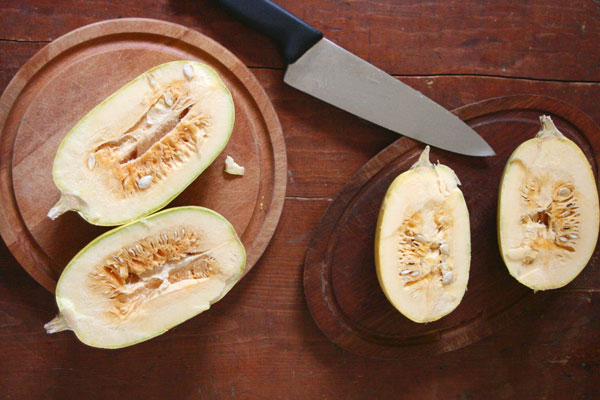
Scrape out seeds (save them to roast like you would pumpkin seeds or save to plant in your garden).
Drizzle with a bit of olive oil.
Place cut side down on a baking sheet.
Bake at 350F for 45-60 minutes, or until flesh pulls away from skin easily with a fork.
Scrape squash flesh out of skin with a fork (or leave in skin and top with desired toppings).
Let’s embrace fall veggies. Let’s get into squashes, soups, and chilly nights.
Happy Eating!
- 1-2 spaghetti squash
- Pre-heat the oven to 350F, place a rack in the lower third of the oven.
- Wash squash and pat dry.
- Slice squash in half lengthwise (I like to start halfway down, then flip it and do the second half – makes it a little easier to cut through those tough skins).
- Scrape out seeds (save them to roast like you would pumpkin seeds or save to plant in your garden).
- Drizzle with a bit of olive oil.
- Place cut side down on a baking sheet.
- Bake at 350F for 45-60 minutes, or until flesh pulls away from skin easily with a fork.
- Scrape squash flesh out of skin with a fork (or leave in skin and top with desired toppings).
Sources: (1) Nutrition Almanac, 2002, Lavon J. Dunne.

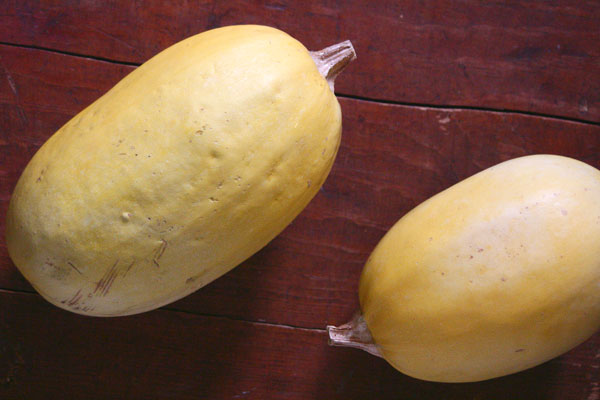
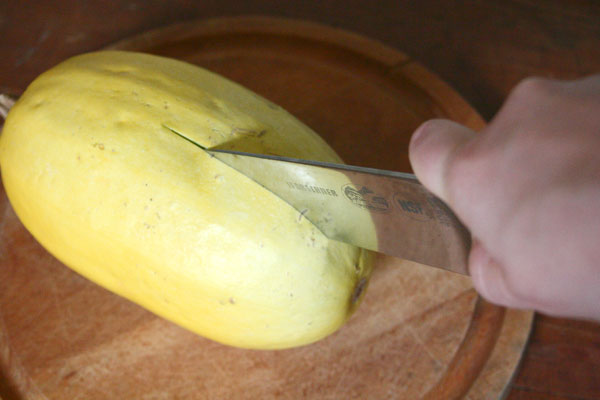
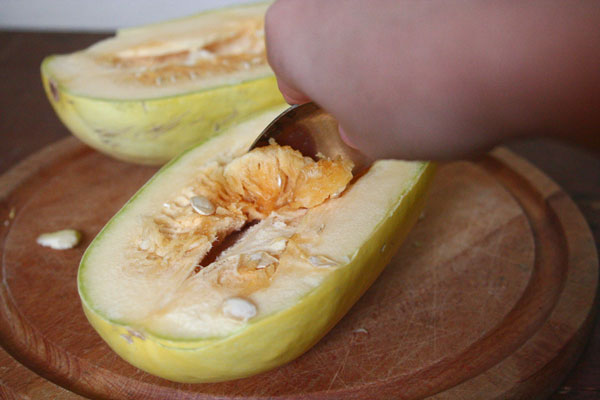

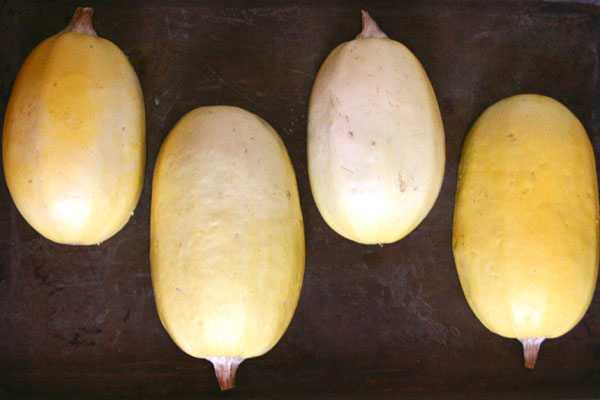
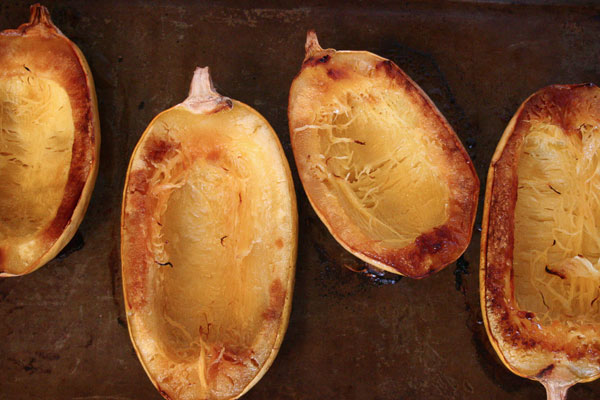
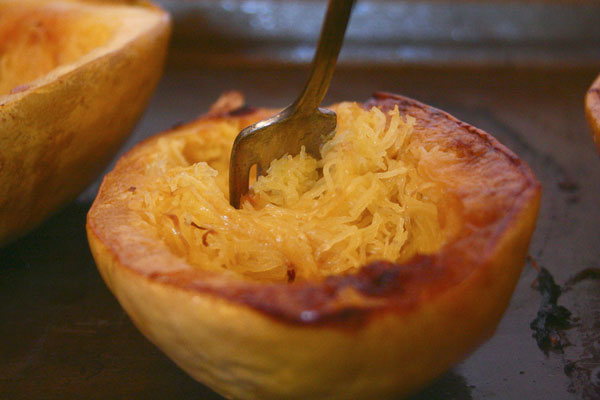
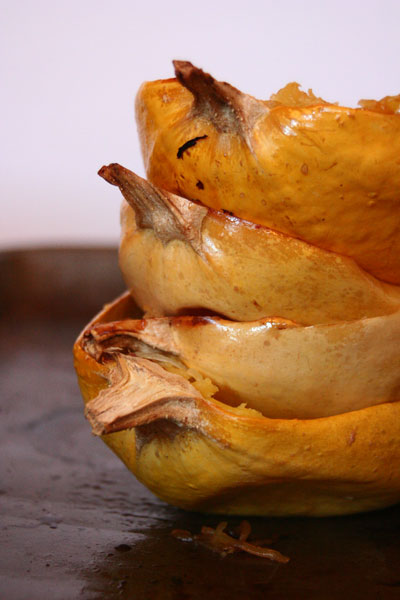
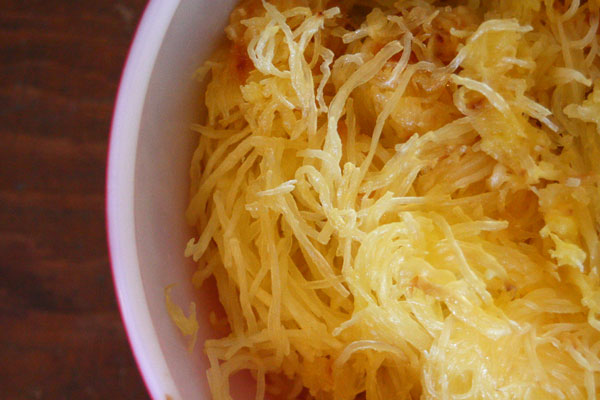



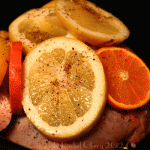


1 Comment